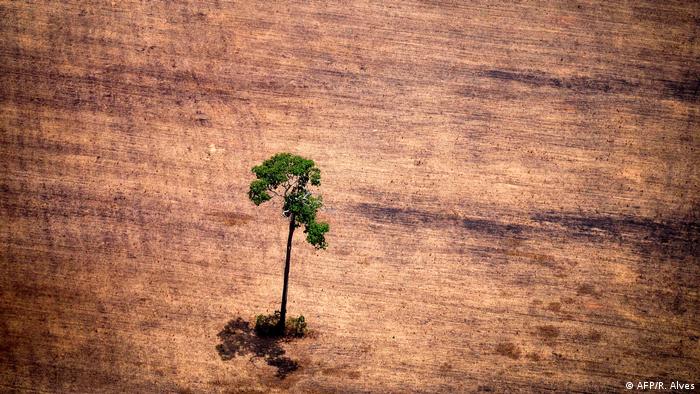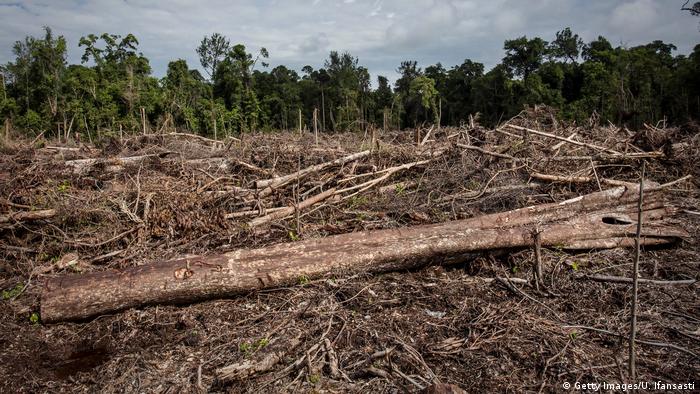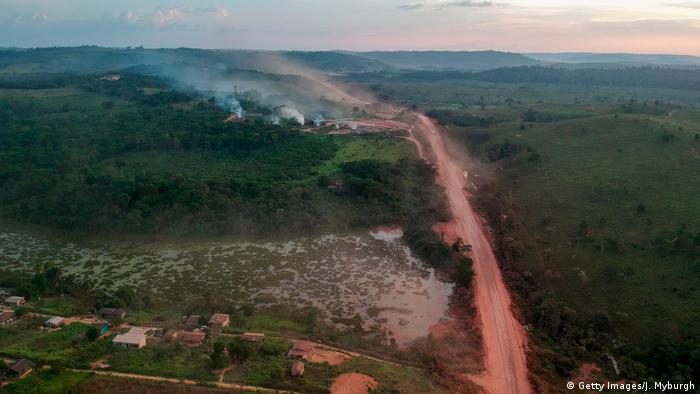How deforestation can lead to more infectious diseases
The world's forests act as shields, keeping humans safe from coronaviruses and other diseases. Their destruction can unleash devastating consequences for global public health.

Scientists have been repeating the warning for at least two decades: As humans encroach upon forests, their risk of contracting viruses circulating among wild animals increases.
That's why Ana Lucia Tourinho wasn't surprised when she heard about the novel coronavirus, which was first detected in China in December and has since spread around the world. An ecologist at the Federal University of Mato Grosso in Brazil, Tourinho studies how an environmental imbalance can cause forests and societies to become sick.
"When a virus that wasn't part of our evolutionary history leaves its natural host and enters our bodies, it's chaos. The new coronavirus is rubbing that in our faces," she said.
Deforestation destroys the equilibrium
Before it infected the first humans and spread through the world by living in travelers' bodies, the novel coronavirus, officially named SARS-CoV-2, inhabited other hosts in a wild environment — most likely bats.
When such viruses are isolated and in equilibrium in their habitat, for example a closed forest, they are not a threat to humans. The problem arises when this natural reservoir is cut down, destroyed and occupied.
Scientific studies published before the current pandemic had already showed a connection between deforestation, the proliferation of bats in the damaged areas and the family of coronaviruses, which includes the current lethal strain.

In Asia, deforestation often occurs to clear land for intensive agriculture, such as palm oil plantations
Aneta Afelt, a researcher at the University of Warsaw in Poland, conducted studies indicating that the next severe infectious disease would come from Asia due to the region's high levels of deforestation over the past 40 years.
To reach this conclusion, Afelt tracked previous pandemics caused by other coronaviruses. These include SARS, which spread in 2002 and 2003 and had a 10% fatality rate, and MERS, which spread in 2012 and had a 38% fatality rate.
"By being one of the regions of the world where population growth is the strongest, where sanitary conditions remain poor and where the deforestation rate is the highest, SEA [Southeast Asia] meets every condition to become the place of emergence or reemergence of infectious diseases," Afelt wrote in a 2018 article.
Read more: Living in the shadows of violence and development in Brazil's Amazon
Watch video 03:02
Slash and burn - When farmers destroy their ecosystem
Amazon rainforest important for public health
The scenario is similar in the Amazon. In 2019, deforestation reached a record-breaking 9,762 square kilometers (3,769 square miles). Reports of deforestation increased by 51.4% between January and March 2020 in comparison to the same period the previous year.
An analysis by Columbia University in New York showed that the region, which houses the biggest tropical forest in the world, is also considered a likely center for epidemics. It also found that bats in Brazil carried at least 3,204 types of coronaviruses.
Tourinho doesn't even want to think about the public health impact that will occur if the Amazon rainforest continues being destroyed at this rate.
"If the Amazon turns into a great savannah, we can't even imagine what kind of diseases [could] come out of there. It's unpredictable," she said. "Besides being important to us because of the climate, the fauna, it is important for our health."
Studies in Brazil have already tracked the direct relation between deforestation in the Amazon and an increase in diseases. In 2015 the government-led Institute of Applied Economic Research (IPEA) found that for every 1% of forest that was cut down per year, malaria cases increased by 23%.
The study used data from 773 cities that a project monitoring deforestation in the Amazon had gathered from 2004 to 2012. Besides malaria, the incidence of leishmaniasis, a disease transmitted by a sandfly-borne parasite, also seemed to relate directly to levels of deforestation.
Read more: Brazil's Amazon rainforest has become the Wild West for illegal gold miners

Wildfires, due in part to deforestation practices, raged in the Amazon in 2019
Forests as shields
"The closed forest is like a shield against external communities coming into contact with animals that are hosts for microorganisms that cause diseases. And when we fragment the forest, that opens new ways of entry to its heart. It's a ticking time bomb," Tourinho said, while pointing out the danger of large projects like hydroelectric stations in the Amazon.
Entering and exiting the closed forest to cut down trees, raise cattle or mine can pose a health danger.
"People who enter these areas can have contact with these viruses and within them take the problem to urban centers," said Tourinho.
In this scenario, indigenous people are more resistant because they have lived with untouched forests for centuries, Tourinho said.
However, when they do come into contact with a new virus, isolated communities can be particularly vulnerable, because members' immune systems haven't been exposed to as many infectious diseases.
Read more: Indigenous people in the Amazon brace for coronavirus
Yet it is in urban centers that viruses can spread more rapidly. "When these viruses reach cities, they disseminate very quickly exactly because it is so easy to travel in these centers, to travel internationally," Tourinho said. "Cities repeat the same confinement style that we impose on animals, and trigger the proliferation of contagious diseases."
One of these paths could explain the origin of the current coronavirus, which has infected more than 3 million people and killed more than 211,000 worldwide, according to Johns Hopkins University.

BATS: SECRETS OF THE FLYING MAMMAL
Not just rare cave-dwellers
From Australia's bush to Mexico's Pacific coast — hanging in trees, perched high up on mountains, hidden in caves, rock crevices, and rooftops—bats are the most widely distributed mammal on Earth, inhabiting every continent except Antarctica. Making up about 20% of all mammals, these nocturnal creatures are the second most common mammal after rodents, and the only one capable of sustained flight.
1234567
DW RECOMMENDS
Amazon sees alarming rise in deforestation
Brazil's state space agency reports a 100% increase in the destruction of the world's largest tropical rainforest in November, compared to last year. President Bolsonaro denies his environmental policies are to blame. (14.12.2019)
Coronavirus: From bats to pangolins, how do viruses reach us?
Pangolins are now confirmed carriers of viruses closely related to SARS-CoV-2. But as with SARS and MERS, bats are the most likely original source. Scientists believe bats' unique genetic quirks make them ideal hosts. (26.03.2020)
Coronavirus lockdown gives animals rare break from noise pollution
The COVID-19 lockdown could become an unprecedented natural experiment in noise pollution. Some of the world's most vocal animals — birds and whales — might already be benefiting from a quieter environment. (16.04.2020)
Date 29.04.2020
Author Nadia Pontes
Related Subjects Deforestation, Amazon, Asia, Coronavirus
Keywords coronavirus, deforestation, epidemic, Amazon, Asia, infectious diseases
Permalink https://p.dw.com/p/3bZ
No comments:
Post a Comment